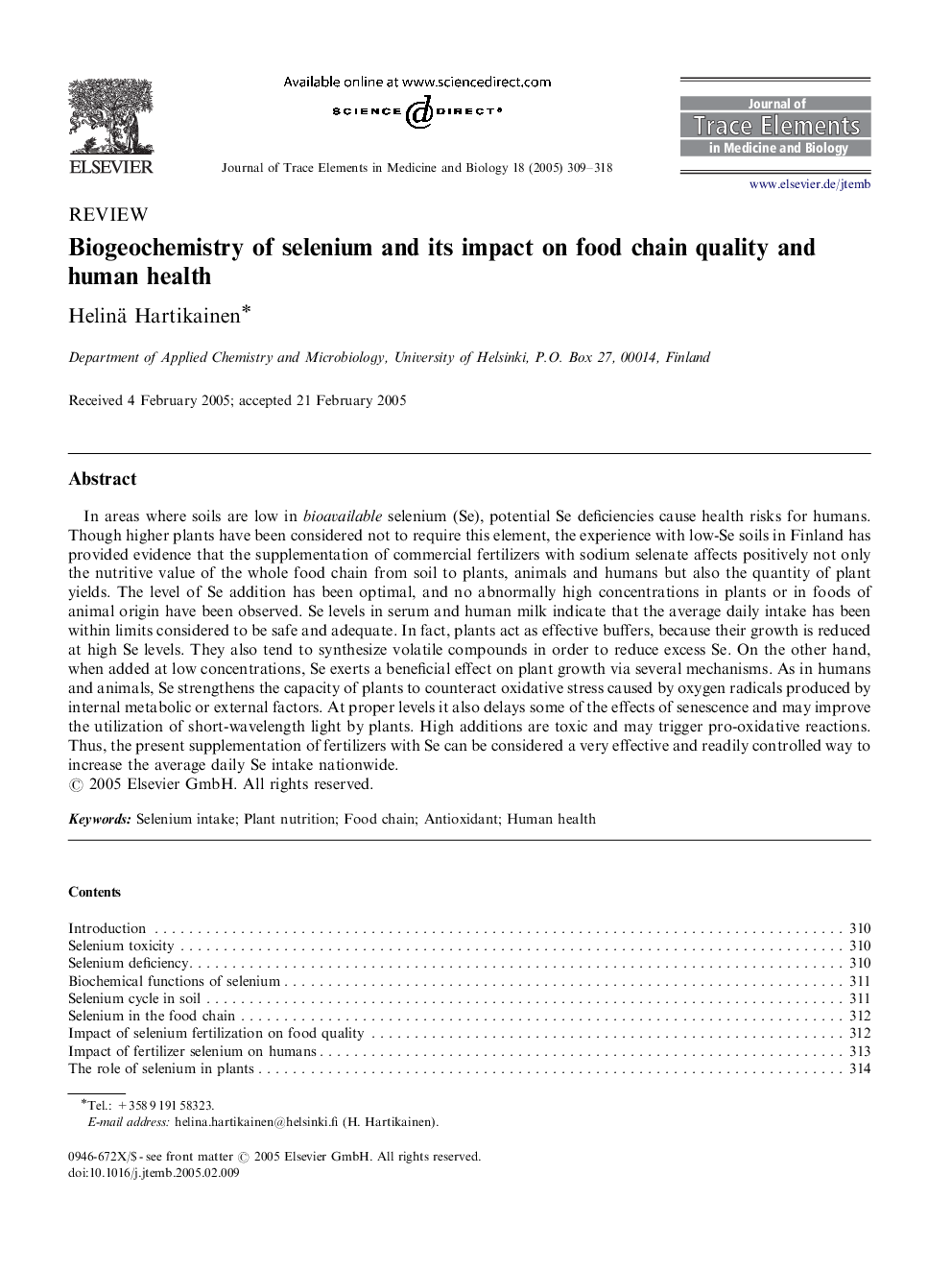| Article ID | Journal | Published Year | Pages | File Type |
|---|---|---|---|---|
| 10556759 | Journal of Trace Elements in Medicine and Biology | 2005 | 10 Pages |
Abstract
In areas where soils are low in bioavailable selenium (Se), potential Se deficiencies cause health risks for humans. Though higher plants have been considered not to require this element, the experience with low-Se soils in Finland has provided evidence that the supplementation of commercial fertilizers with sodium selenate affects positively not only the nutritive value of the whole food chain from soil to plants, animals and humans but also the quantity of plant yields. The level of Se addition has been optimal, and no abnormally high concentrations in plants or in foods of animal origin have been observed. Se levels in serum and human milk indicate that the average daily intake has been within limits considered to be safe and adequate. In fact, plants act as effective buffers, because their growth is reduced at high Se levels. They also tend to synthesize volatile compounds in order to reduce excess Se. On the other hand, when added at low concentrations, Se exerts a beneficial effect on plant growth via several mechanisms. As in humans and animals, Se strengthens the capacity of plants to counteract oxidative stress caused by oxygen radicals produced by internal metabolic or external factors. At proper levels it also delays some of the effects of senescence and may improve the utilization of short-wavelength light by plants. High additions are toxic and may trigger pro-oxidative reactions. Thus, the present supplementation of fertilizers with Se can be considered a very effective and readily controlled way to increase the average daily Se intake nationwide.
Related Topics
Physical Sciences and Engineering
Chemistry
Analytical Chemistry
Authors
Helinä Hartikainen,
